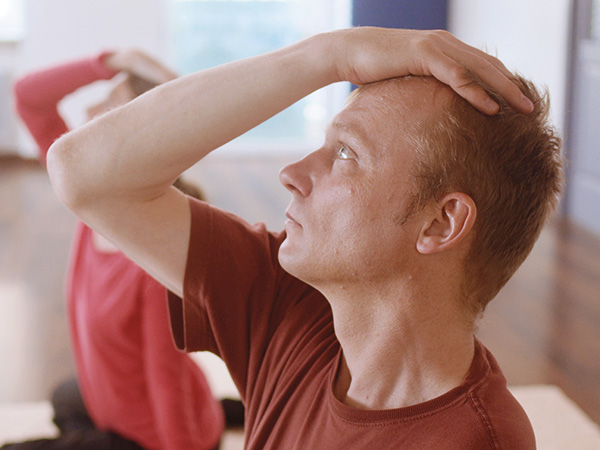What is the Feldenkrais Method™?
The Feldenkrais Method™ is fundamentally different from other practices which frequently focus on muscle strengthening, stretching, aerobic activity, energy work or relaxation. What the Feldenkrais Method™ does is teach us about how we move and help us to develop strategies to reduce effort and increase movement quality and coordination.
It allows us to move more easily within our own limitations and to develop our abilities without causing pain.
This very original work is named after its founder, the physicist, engineer and martial arts expert Dr Moshe Feldenkrais. Feldenkrais developed his work after a recurrent knee injury. When he realized that it was impossible to solve his problem by focusing on the knee alone he began looking at the functioning of the knee not as an isolated part but in relation to the other parts of the leg and the entire self.
He studied in depth the mechanics of the skeleton applying his knowledge of physics, engineering and martial arts.
This led him to discover that his difficulty was caused by the way he moved, by the unconscious and compromising ways in which his body had adapted to his injury and by the faulty image he had of himself. By making his habits and patterns of movement conscious he was able to improve the way he moved, avoid surgery and return to healthy functioning.
When he began working with other people with a wide variety of difficulties he realized that learning is far more important than exercising. Learning allows for longer lasting change, it addresses the whole person – their sensing, feeling, acting, and thinking.

His method creates a special environment in which to learn and bring about improvement in a natural way.
Who can benefit from the Feldenkrais Method™ and how?
The Feldenkrais Method™ has a wide range of application. People of all ages – from babies to the elderly – whether they are healthy or encountering difficulties, can benefit from this work. As well as helping to improve their movement abilities and increase their level of comfort, the method can make moving more pleasurable. It can heighten self-esteem, inspire trust in one’s body and help to reduce feelings of fear and anxiety.
The gentle, sensitive approach that the Feldenkrais Method™ offers, allows it to play an important role in recovery from accidents and injuries. It is an effective way to relieve chronic back pain, shoulder tension and musculoskeletal difficulties like repetitive strain injury and sciatica. The method can also provide support for individuals with neurological conditions such as stroke, cerebral palsy or multiple sclerosis and guide them towards healthier ways of functioning.
Performing artists, in learning a wide variety of movement skills, are able to refine their techniques, develop more freedom of movement and enhance their artistic expression. In short, everyone, including people who enjoy sports and leisure activities such as walking, running, and swimming can discover a new feeling of lightness and ease of movement through practicing the method.

What do we learn from the Feldenkrais Method™?
Working with our awareness is central to the method. During the proposed movement explorations we are invited to use our attention to feel, sense and perceive different aspects of what we are doing. We are engaged in a process in which we compare habitual ways of doing things to non-habitual ways and move towards establishing a felt sense of what is ”right”.

Moving slowly and gently can make it easier to sense differences, which is an important factor in learning. In fact many things come together in the method to facilitate our learning – a friendly, relaxed atmosphere is created through the lessons and people often have fun and experience feelings of joy while doing them. At the same time the learning has a certain quality to it, this is because Moshe Feldenkrais took into account the workings of the nervous system and constructed elaborate ways to communicate with and stimulate it through movement.
He created over a thousand movement lessons focusing on the functional movements of everyday life such as turning, bending, reaching, pulling, pushing, getting up or walking. These movements, which are more meaningful to our nervous system than any other type of movement, form the foundation for most activities.
The feelings and responses we get while moving and exploring these lessons lead us naturally towards improvement without any need to force. On the contrary, everything is done in the most agreeable, most effortless way possible.


